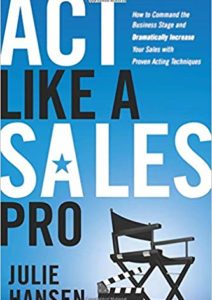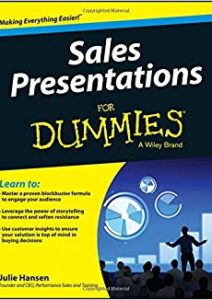How many boring presentations have you been subjected to in your life? Depending on the role, you can multiply that by ten, twenty or fifty for your prospect! Why does this matter? Boring presentations are unsuccessful presentations. They fail to differentiate you from the competition, hold the attention of busy prospects or motivate them to take action.
In a day and age where we know so much about our prospects, from their interests and dislikes, to their challenges and goals, why are so many sales presentations still so incredibly boring? The number one reason has to do with structure. In other words, boring, unsuccessful presentations are simply “built to bore.”
The majority of salespeople today are still following a presentation structure that has been around since the seventies — even though many of today’s prospects were not even alive in the seventies! Add in major changes in our communication style, a significant drop in human attention span, and a glut of available information, and you can see the magnitude of the problem.
To truly engage and persuade today’s busy buyers, you must let go of this tired old structure and embrace a more contemporary approach. Let’s look at some areas where a traditional, boring sales presentation fails today and what you can do instead.
5 Elements of a Boring Presentation (and what to do instead)
1. The Company Overview: The first few minutes of your presentation are your most valuable real estate. Yet most presenters waste the opportunity to make a strong first impression by talking about their company. Research shows that today’s buyers don’t care – or, they’re already familiar with – this information. Predictable information delivered in a predictable spot creates a weak first impression and early tune out.
Instead try this: Dump the company overview. Make the first few minutes of your presentation all about the customer. Review their situation (see #3), set objectives (see #4) and preview a benefit or insight that you will expand on later.
2. The Agenda: The boring overview is often followed by a boring agenda. While agendas can be valuable, that is not the case with the typical list of vendor-focused topics, like product features or names, that you see in most presentations. Agendas are also rarely referred back to by the presenter, leaving the buyer to wonder where they are in this long, tedious journey.
Instead try this: Make your agenda customer-focused by using topics that describe your prospect’s issue or business process, not your product. Refer back to the agenda after you complete each section to reinforce key points and give your prospect a welcome sense of progress.
3. The Customer’s Situation: Finally the presentation turns to the customer. Hurrah! Unfortunately, your buyer’s attention has waned and you have thus far failed to differentiate yourself from countless other vendors vying for your buyer’s time and money.
Instead try this: Review the customer’s situation with them in the beginning. Reconfirm their challenges and objectives to make sure that you are on the right track.
4. The Feature Dump: At this point in the presentation the goal appears to be to show as many features and capabilities as time allows. Unfortunately, the greater goals of clarity and relevance are lost – and so is your customer.
Try this instead: Avoid getting deep into how a feature or process works. The goal of a sales presentation is not to train a prospect on how to use your product. But rather to make them think, “I need this now!” You can accomplish this by focusing on connecting the dots between a feature or process and how it will help your customer achieve his goals.
5. The Close: The close is often the least prepared and most awkward part of a sales presentation. Presenters tend to either abruptly “stop,”, or “whimper” to a finish. Either method fails to inspire confidence or move the sale forward.
Try this instead: Recall the objectives you set out at the beginning. Summarize value and provide proof. If you’ve delivered a compelling case, don’t let this feel-good moment simply fizzle out! Tell your buyer what you want them to do with a clearly defined and measurable next step. Click here for 5 ways to close your presentation on strong note.
While your buyer is likely to suffer through a boring presentation in silence, he will vote with his wallet. Replace the traditional built-to-bore presentation with a more contemporary and persuasive structure that quickly and consistently places the focus squarely on your customer.
Pipeliner CRM empowers salespeople to make the right presentations. Get your free trial of Pipeliner CRM now.













Comments